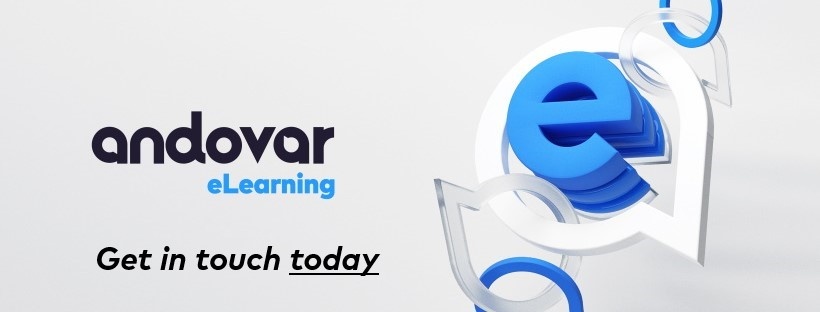eLearning exploded in 2020, with 98 percent of companies employing some type of etraining. That's up from 77 percent in 2016. While the COVID-19 pandemic was the impetus for the rapid change, eLearning already was growing at an annual rate of 8 percent before the pandemic.
/Blog%20in-page%20images%202021/Untitled-11.png?width=740&name=Untitled-11.png)
Companies that have added eLearning in 2020 are likely to continue to offer eLearning post-pandemic for several reasons. The first is that workers are indicating they want to continue to work at least some of the time remotely. This will necessitate continued remote training. The second is financial. Companies are discovering that eLearning saves on travel costs and travel time over in-person instructor learning. Specifically, those companies during the pandemic that had well-developed eLearning programs achieved 218 percent higher revenues per employee and experienced 24 percent higher profit margins.
Here are seven other eLearning trends we expect to see in 2021.
1. Mobile-first/Blog%20in-page%20images%202021/3.png?width=740&height=282&name=3.png)
According to a CNBC study in 2019, 72.6 percent of the world will access the Internet only on their smartphone by 2025. With that in mind, companies are changing the way they design eLearning courses. Previously, most companies built training courses for desktop computers first, then adapted them for mobile viewing. We're now seeing that reverse, with more companies building courses for mobile devices first, then adapting them for desktops. In the future, courses will need the flexibility to be published in multiple outlets, so that learners can successfully access them regardless of device.
2. Microlearning
Attention spans are shortening. In just 15 years -- from 2000 to 2015 -- the average attention span of a human being has shrunk from 12 seconds to eight seconds. That means we now have a shorter attention span than a goldfish. To accommodate these shorter attention spans, eLearning is being presented in small 5-to-10 minute video lessons. Microlearning also will grow in popularity because the average employee only has about 25 minutes in a week to stop and learn. Research also indicates that those who learned in chunks took 28 percent less time to answer assessment questions than did those who participated in longer programs. They also performed 20 percent better.
3. Social learning
Facebook has more than 2 billion users. Youtube, WeChat, and Instagram each have a billion users. Other social media platforms have several hundred million users. Social media usage is particularly high among those under 30. For example, 90 percent of adults 18 to 24 use Youtube and 76 percent of them use Facebook. Among those 25 to 29 years old, 93 percent use Youtube, and 84 percent use Facebook.
/Blog%20In-page%20graphics%202021/Content%20Creator%20Flat%20Vector%20Illustration-01.png?width=323&name=Content%20Creator%20Flat%20Vector%20Illustration-01.png) Innovative organizations are encouraging employees to post, hashtag, and talk with one another and others outside of the company about what they are learning.
Innovative organizations are encouraging employees to post, hashtag, and talk with one another and others outside of the company about what they are learning.
These organizations also are finding ways for colleagues to learn from one another, in addition to learning from formal eLearning programs.
Many companies also are incorporating Youtube and Tedtalk videos alongside their own original content to provide for multiple learning formats.
4. Gamification
Gamification, or adding game-like elements to eLearning, has been a trend in recent years and will continue. This gamification can be as simple as using a point system or more complex such as offering badges and other/Blog%20In-page%20graphics%202021/Play%20Game%20Activitiy%2004.png?width=349&name=Play%20Game%20Activitiy%2004.png)
prizes. If properly done, the gamification motivates learners, holds their attention, and encourages them to listen more closely. Studies have found games increase retention and can put the learner in situations that teach real-world problem-solving. The games also provide automatic feedback about how well the employee is absorbing the material.
5. Videos
eLearners demand and expect videos, and trainers will incorporate more of them in their content this year. Some training designers will curate videos from Youtube, while others may design and incorporate their own videos. Video training, whether synchronous (where everyone watches simultaneously) or asynchronous (where users can watch at their convenience), will continue to be popular./Blog%20in-page%20images%202021/4.png?width=740&name=4.png)
6. Personalized experiences
Generation Z, or those born in 1997 or later, expect personalized consumer-quality training at their jobs. Some of them are building their own programs by curating content from other sources, while others expect their employers to offer gamified and microlearning experiences just for them. As the oldest members of this generational group are beginning to enter the workforce, this trend toward personalized training experiences will grow.
7. Emphasis on data
Companies and course designers are increasingly relying on data to drive their decision-making. Companies are seeking data on their remote workforces, including their productivity and development. They are adapting learning systems that can track how each employee applied their learning. With these insights, they can continue to improve the effectiveness of their eLearning programs. Another trend will be developing ways to protect online learners' data from hackers or other cyber predators./Blog%20in-page%20images%202021/data.png?width=740&name=data.png)
Andovar at your service
Only 20 percent of the world’s population speaks English, and fewer than 4 percent speak it as a first language. As you increasingly rely on eLearning, you'll need translation help for non-English speaking employees. A literal translation is no longer enough; you'll need experts like us who understand the nuances of each culture.
/Blog%20in-page%20images%202021/2.png?width=740&name=2.png)
If you’re seeking to train employees internationally or those who don't speak English as a native language, contact us. We are headquartered in Singapore and have offices across Asia, the United States, and Europe and do all our work in-house. We provide audio, native-speaking voice talents at a competitive price.













